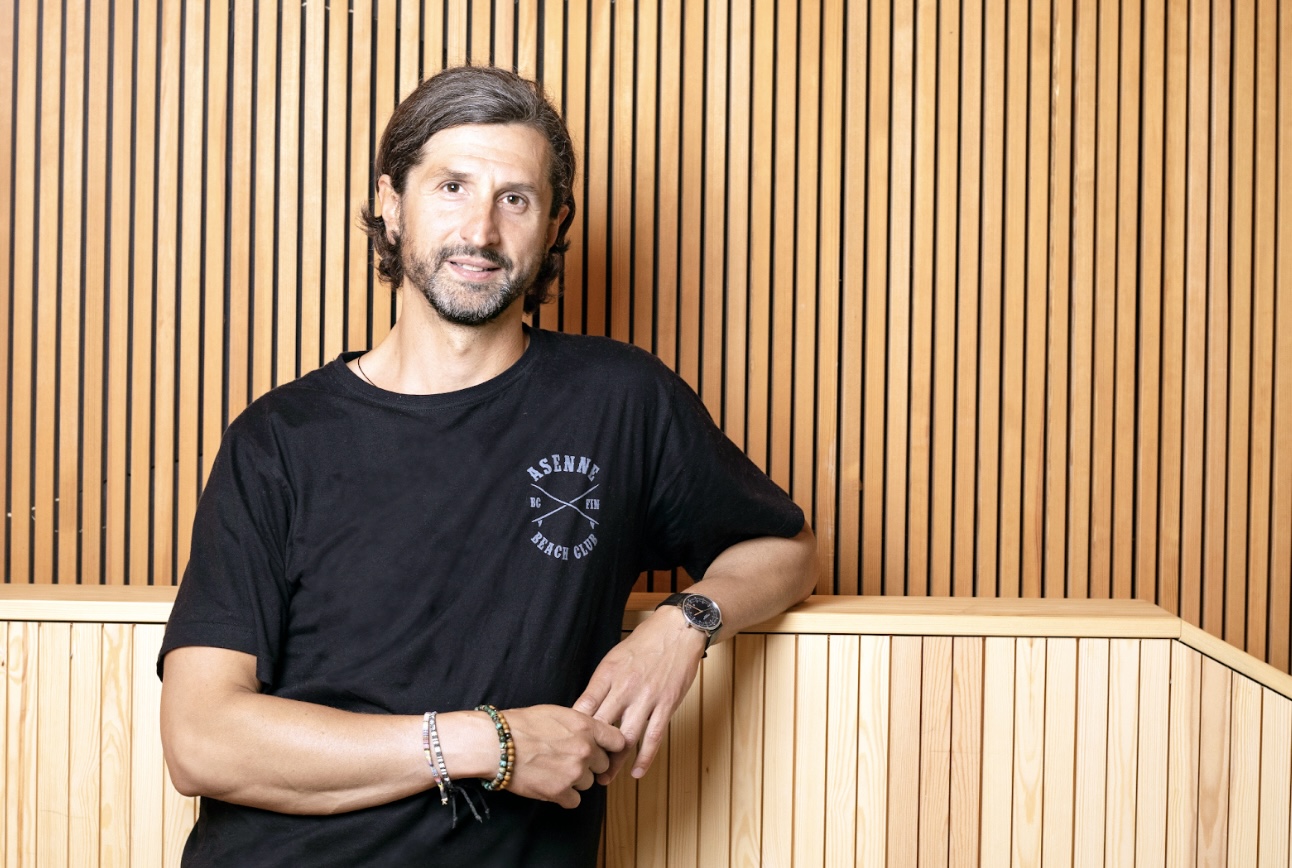Consumer Tech in Business

As CES concludes, what technologies will have a business application this year? Will enterprises embrace these devices to drive efficiency, connectivity, and transformative experiences?
In the dynamic landscape of 2024, the symbiotic relationship between consumer technology and the business space has reached new heights, unveiling a transformative era where innovation is the key to success.
From ground-breaking advancements showcased at events like CES to the seamless integration of cutting-edge gadgets and software solutions, businesses are harnessing the power of consumer tech to redefine operations, enhance productivity, and elevate the overall user experience. The fusion of consumer-oriented technologies is not just a trend but a strategic imperative for enterprises seeking to thrive in the digital age.
The boundaries between consumer and enterprise technology have blurred significantly in 2024. Technologies once exclusive to personal use are now finding applications within businesses. This cross-pollination is driven by the demand for user-friendly, intuitive solutions that mirror the digital experiences employees encounter in their personal lives.
Mobile devices, smart wearables, and intuitive apps have seamlessly integrated into professional workflows. The ubiquitous use of smartphones for work-related tasks, such as email communication, document sharing, and collaborative project management, exemplifies this crossover. As businesses recognise the familiarity and efficiency these consumer technologies bring, the adoption rate continues to rise.
Speaking to Silicon UK, Maani Safa, founder and CEO of Poppins advises: “Integrating new technologies with existing legacy systems can be complex and costly and sometimes very difficult to overcome. Adopting a phased approach to integration, focusing on compatibility and scalability can help.

“In our experiences the “human” change management required can also be a challenge. It is also important to ensure that both employees and customers effectively adopt and are comfortable using new technologies. The best approach here is to provide comprehensive training and support for employees. For consumers, focus on user-friendly designs and ensure customer support is readily available.”

Businesses also need to contend with an acceleration of application and service development. “Creating a synergy between the user and the technology can act as a barrier for businesses to fulfil its goals,” says Mikael Kopteff, CTO, Reaktor. “The technologies are often disregarded when not fully understood. True innovation happens when you can mix technology, design and business at every level. Appreciating that allocating capital expenditure can be a juggling act, digital transformation should be viewed as a tool for businesses to reach other goals for example in sustainability initiatives.”
Beyond BYOD
The concept of BYOD has undergone a paradigm shift, moving from a cautious approach to widespread acceptance. In 2024, employees are encouraged to use their personal devices for work purposes, fostering a more flexible and adaptive work environment. This not only promotes employee satisfaction but also leverages the familiarity individuals have with their personal devices, thereby enhancing productivity.
BYOD has become a strategic asset for businesses looking to attract top talent by offering a flexible and modern work environment. However, this shift requires robust security measures to mitigate potential risks associated with the use of personal devices in professional settings.
The use of more VR and AR devices in a business context has been growing but not at the speed industry watchers had predicted. Apple’s Vision Pro may change that when it comes to market this year. However, Glenn Shoosmith former technology advisor to Number 10 and now founder of a new start-up Prove Anything, says, business is still wary of the business cases for virtual space technologies.
“Many retail companies have recently been burned by forays in the AR/VR market. This is not specifically that they have been commercial failures, but in an eagerness for dramatic headlines and clicks, anything less than a stellar success can find itself publicly derided and mocked. The often made connection between AR/VR and other ‘Web 3.0 technologies’ such as blockchains and NFT’s has complicated matters. The two most common ways that brands create experiences is either to give access to the brand for those who wish to show loyalty in virtual environments in which they already play, or to create some kind of new show, store or experience in the virtual world which cannot be done IRL (In Real Life).”
Shoosmith concluded: “The Web 3.0 world of NFT’s has a use here to allow virtual ‘ownership’ as a mark of demonstrating brand allegiance; however, the inevitable backlash against hyped NFT’s as investments and their subsequent crash has muddied the waters. The reality is that more and more companies will dip in and out of AR/VR projects and other Web 3.0 technologies over the next few years, sometimes quite discreetly to test the waters, sometimes for a specific marketing campaign, and sometimes as part of a tie up with a major platform. Unlike AI which has seen a sudden and dramatic uptake for major commercial reasons, VR/AR is on the slow path to adoption – but it will be slow – think 12 years not 12 months.”
There is a clear need to understand how consumer technologies can be implemented securely within a business context. The line between consumer tech and business has continued to blur. The driver here is a business’s workforce and which technologies they are comfortable using.
The question of AI
No discussion of the consumer tech in business would be complete without considering the impact of AI. This year’s CES was awash with AI enabled devices to more or lesser degrees. Businesses that can gain a firm hold of the benefits that AI enabled devices could bring to their enterprises will be the big winner in their industries or sectors.
In their report, InfoTech make the case: “We are interested in delineating between AI adopters and skeptics because AI and machine learning (ML) will see the fastest-growing adoption among all emerging technologies in our survey. Nearly one-third of respondents say they plan to invest in AI next year. An additional 35% say they are already invested and plan more investment in AI. AI-based business strategies aren’t just for those on the cutting edge. In our Future of IT survey, about 1 in 5 IT leaders told us they are already using AI to help define business strategy.”
Also, Infinum’s Chris Bradshaw, product strategy director, Infinum, also points out: “Our research reveals that a significant 78% of businesses plan to invest in AI this year, yet a concerning 73% admit to being unprepared for its integration. What’s even more troubling is that 65% of these businesses struggle with utilising their data effectively for driving digital transformation.”

“While it may seem like an oversimplification, the key to AI success is the quality of data and this can’t be underestimated. Before plunging into AI integration, businesses should revisit the basics, ensuring a thorough understanding of available data, its quality and how AI could be used to improve efficiency or solve pain points. Only then can businesses actually embrace the tech in the right way, without AI for AI’s sake.”
Care must be taken to ensure these technologies are integrated into existing workflows. The pandemic and the lock downs that insured illustrated the risk of tech overload particularly for remote workers.
“Organisations must be thoughtful about how their use of technology will fit in to people’s lives and what it will demand of them,” says Accenture. “Time? New skills? Brands that offer people greater choice in how they use (or don’t use) technology to interact will become trusted partners, because customers will be able to regain a much-needed sense of agency.”
41% of frequent tech users say that technology has complicated their lives just as much as it has simplified it.
With Reaktor’s Mikael Koptef, also stated to Silicon UK: “New consumer technologies, like AI, are set to make waves across nearly every industry. You only have to look as far as the yearly CES event in Las Vegas to get an idea of how AI and new consumer tech will have enormous ramifications on a whole host of industries. A standout innovation this year was the “AI mirror” by Baracoda which serves as a mental health companion. In the realm of E-commerce, where returns, especially of clothing items, significantly contribute to landfill waste, the integration of AI and AR tech into household objects like mirrors emerges as a promising solution to minimise clothing wastage.” Could technology like this find its way into offices or employees’ homes?
The integration of consumer technologies into business operations is not merely a necessity but a strategic move for staying competitive. Businesses that embrace innovation and leverage the latest consumer technologies gain a competitive edge by fostering a culture of agility, adaptability, and continuous improvement.
But Chris Bradshaw from Infinum makes the vital point that the consumer technologies that are infiltrating business processes must remember to keep the human using this technology at the centre: “Technology is a powerful servant but a dangerous master. We are currently living in the most exciting time in human history, characterised by the emergence of numerous new and distinctive technologies. These technologies are rapidly becoming integrated into our habits, bodies, and lives. It is crucial to remember that technology is merely a tool, empowering humans to extend their reach and overcome limitations. Therefore, when utilising any technology, our priority should always be people.”
2024 marks a significant milestone in the convergence of consumer technologies and business operations. The pervasive use of personal devices, the acceptance of BYOD, the impact of remote work, and the imperative for robust security measures underscore the transformative nature of this paradigm shift. As businesses continue to navigate this digital landscape, embracing innovation and proactively addressing security challenges will be paramount in ensuring a successful and sustainable integration of consumer technologies into the enterprise.
![]()
Cassiano Surek, CTO, Beyond.

Cassiano Surek is a technical leader who strongly believes that automation and artificial intelligence are amplifying people’s creativity and efficiency. As Beyond’s CTO and Head of Beyond’s Generative AI practice, he has assembled technical teams to modernise digital platforms at Google, Snap, Shutterstock and GotPhoto.
How has the integration of artificial intelligence and machine learning evolved in consumer tech for businesses, and what opportunities or challenges does it present?
“AI has evolved over the past decade from something that was fringe and little understood to a central part of the technology industry with almost every single consumer tech company now incorporating AI or ML into their practices. For many this exists in the simple and readily available chatbot – where AI can immediately augment human workers and save time and money by processing simple queries from consumers. But behind the scenes AI is also used throughout the development process for prototyping, iterative design and streamlining manufacturing – rapidly improving time-to-market for new products.
“The question is no longer whether to incorporate AI into business processes but how to do it effectively and efficiently. Companies that embrace the AI revolution are likely to see the most success in their technological advancements, in cornering new and cutting-edge markets, and getting the most out of their workforce. But the implementation of AI is not without its core challenges, for example many GenAI programs have the potential to invent false or inaccurate information meaning those that invest heavily here must focus on validating relevant outputs. As the old saying goes – trust but verify – and in the world of AI this remains essential.”
Are there any notable trends in cybersecurity within consumer tech that businesses should be aware of to protect their data and assets?
“Consumer technology is designed to be used by consumers, and this presents an inherent risk, especially when people use the same devices for work and leisure. Users might not be aware of security concerns, the risks posed by malware, or using company devices to share personal information. By default, consumer technology typically lacks enterprise-level data security and is often designed to enable easy integration and data sharing with other apps and programmes.”
In what ways are businesses leveraging augmented reality (AR) and virtual reality (VR) for consumer engagement and internal operations?
“AR and VR have emerged as innovative ways for businesses to engage with their customers and workforce and create more accessible and inclusive experiences. Businesses are already harnessing the inherent “sci-fi” nature of AR and VR for their advertising through products such as the Meta Quest headset, and making their offering more personalised through virtual fitting rooms that let customers see what clothes look like on a model with their body shape, or what new products would look like in their home.
“For internal operations businesses are coming round to the uses of AR and VR in two major areas: training and product development. Interactive and engaging AR/VR experiences are an impactful means of training new employees on complex and novel activities. Most people learn by doing, but training a new recruit on a rare but crucial process is tricky when that training opportunity doesn’t arise very often. AR gives a real world experience that is much more memorable than a video or written explanation can be. For product development the concept of a digital twin has long existed, a method of replicating a prototype in a virtual environment in order to test design changes without the costs of manufacturing multiple versions. Incorporating a digital twin with AR or VR technology allows designers to better experience the products they are improving and therefore make more effective changes faster.”
What role do wearable technologies play in enhancing employee productivity and well-being, and what advancements can we anticipate in this space?
“Wearable technology’s primary function currently is convenience, removing the need for a cumbersome piece of equipment and replacing it with a small and portable piece of gear to enhance a workday. For many, the most easily recognisable piece of wearable tech is the Apple Watch, but throughout several industry spaces wearables are becoming increasingly common.
“AR-enabled glasses were first popularised by the now defunct Google Glass product, but the premise still remains highly intriguing to developers and they are already in use in some warehouses to boost productivity and improve workplace efficiency. The relative usage of similar products is set to increase as AR related glasses combined with sophisticated AI could help doctors perform surgeries, plumbers detect leaks and architects design buildings.
“Sensor based wearables have existed for many years but are becoming increasingly adept at detecting and highlighting unique problems. Early examples include the radiation badge used to tell medical professionals how much radiation they have been exposed to over time from X-ray machinery, modern equivalents will highlight increases in air pollution, excessive bodily strain or even high exposure to noisy environments – providing insights to employees that can be actioned to improve their health and wellbeing.”
With the increasing focus on sustainability, how are consumer technologies contributing to environmentally friendly practices in businesses?
“Improvements in reporting and monitoring technology have also been fundamental in ensuring that companies are aware of their environmental impacts. Many smaller companies have previously found it difficult to invest in such monitoring tools and therefore struggle to make actionable recommendations for improving their sustainability. Now, many consumer technologies enable real-time monitoring and reporting, making it easier to identify sustainable actions and quantify their impact. For some businesses, consumer devices may also be a more energy efficient option compared to enterprise-level solutions that might offer extensive functionalities that are not needed.
“For a long time now, consumer technology has been tarnished by throwaway culture and the resulting electronic waste, but the industry is changing for the better. Various recycling options exist for end-of-life electronics and many providers incentivise trading old devices in for a later model, helping reduce the ecological impact of keeping up with this technology.”
How do you see the evolution of customer experience through the use of advanced technologies such as chatbots, voice assistants, and personalised marketing in 2024?
“As these technologies become more sophisticated, their role in enhancing the customer experience grows. They will help businesses remove friction from key touchpoints of the customer journey and more effectively address some of the main pain points, such as long waits for assistance, accessibility and the demand for creating more tailored experiences, optimising the service provided and freeing human employees to focus on tasks where they can add the most value. Incorporating technologies such as Generative AI powered voice assistants and chatbots, as well as putting augmented reality (AR) into their websites and apps can also play a key role in enabling better inclusion and helping businesses make their offering available to a more diverse set of customers.”
What challenges do businesses face in adopting and implementing the latest consumer technologies, and what strategies can help overcome these challenges?
“Integration with existing devices and systems can prove challenging, as well as ensuring compatibility with any enterprise-level solutions used. Consumer technology might also not comply with data security requirements on a business level, especially in sectors where data security is paramount, such as finance or healthcare. Having a holistic view of the digital transformation strategy from the beginning will help ensure that any consumer tech purchased will be a good fit for the digital infrastructure and meet the requirements for security and useability.
“As with any new technology, staff buy-in is required for optimal results so clear communication and sharing objectives is vital; they need to understand what the technologies are used for and how they will make their jobs easier. Training is key to unlocking the benefits of the new technology and enabling staff to utilise it in tandem with any legacy solutions without putting security or productivity at risk.”
Are there any specific industries or sectors that are particularly poised to benefit from the integration of new consumer technologies in 2024?
“As technologies such as Generative AI-assistants become increasingly available in consumer devices and consumer-focused software, many industries where little technology has been available to individual employees due to cost or logistics constraints will be able to benefit. These could include sectors such as retail, travel and education, where employees across the organisation from office-based roles to shop floor and field-based colleagues will be able to leverage these technologies to enhance the way they carry out their tasks. Advances in this space will also benefit industries with large numbers of mobile workers, who can carry out more jobs remotely and have access to greater insight and assistance on the go.”
Are there any notable collaborations or partnerships between consumer tech companies and businesses that showcase innovative solutions or approaches?
“Humane’s AI pin is a good example of an innovative solution which provides support for consumers in their day-to-day needs, without keeping them glued to their phone screens. Designed to replace smartphones, Humane partnered with OpenAI to make the power of Large Language AI Models available through their AI pin. Its operating system called Cosmos and a software called AI Mic propose quite a novel experience to users: the ability to control the device through speech, gestures and a camera.”